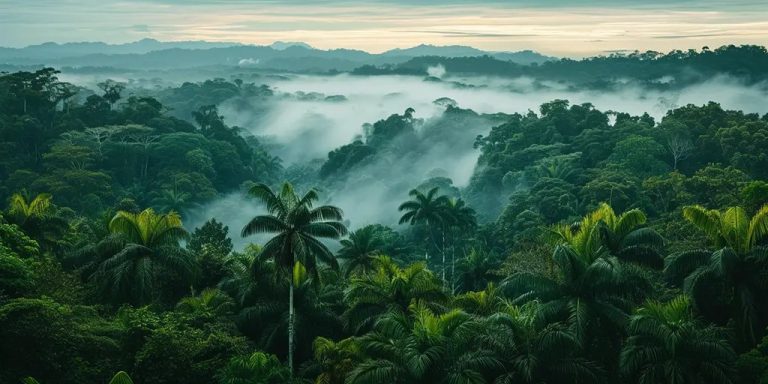The climate alarmists’ narrative is as full of irony as the verdant desert they never foreseen. Once upon a time, the world should have been swallowed up by the ever-expanding Sahara Desert, with desertification hailed as “the greatest environmental challenge of our time.” Fast forward to today, and the alarmists have turned again, now fretting over the unexpected greening of these same arid lands. It's a classic case of moving the goalposts, and one can't help but laugh at the absurdity of it all.
Desertification panic
Remember when desertification emerged as the evil lurking in the shadow of climate change? The story is simple: Human activity, combined with rising temperatures, will cause deserts to spread around the world. It is speculated that poor farming practices and overgrazing are turning fertile land into barren wasteland. Alarmists paint a picture of a world where cities will be swallowed whole by sand dunes and humans will resemble nomads scouring the earth in search of water. But then, a funny thing happened on the way to the end. The desert did not expand as expected. In fact, many of them are starting to turn green. Yes, you read that right. Areas that would have been dry and blown away by the wind are now experiencing a surge in vegetation growth. It's as if nature decided to play a little prank on those who thought they had it all figured out.
CO2: Unlikely Heroes
Carbon dioxide is the main culprit in the climate change saga. For years, carbon dioxide has been demonized as a major driver of global warming. But it turns out the much-criticized gas is also a key factor in greening the world's drylands. As carbon dioxide levels rise, so does the rate of photosynthesis, allowing plants to thrive in even some of the harshest environments. This phenomenon is called carbon dioxide fertilization, and it increases vegetation productivity in large swaths of arid land. Rather than celebrating the positive effects of carbon dioxide on plant growth, they turned their attention to the potential negative effects. They warn that additional vegetation could drain scarce water supplies, disrupt local ecosystems and even increase the risk of wildfires. It's like they're determined to find a cloud in every silver lining.
Pay attention to greening issues
With desertification no longer the existential threat it once was, climate alarmists have to turn again. Now, all the narrative is about the potential dangers of greening. There are concerns that as dryland vegetation becomes more abundant, they may lose their unique biodiversity. Specialized species adapted to drought conditions may be replaced by fast-growing plants better suited to the new carbon dioxide-rich environment.
The greening of arid areas appears to be here to stay as we pump more carbon dioxide into the air, according to two recent modeling studies. But ecologists warn that despite appearances, going green could have negative consequences for arid ecosystems and the people who rely on them. Desert plants and animals often suffer, and excess vegetation can drain scarce water supplies.
Drylands account for approximately 40% of the Earth's land surface. At its core, the desert is a vast expanse of savanna, dry woodland, and sometimes irrigated fields. These areas are home to more than a third of the world's population and are among the world's most biodiverse ecosystems, according to the International Union for Conservation of Nature, an international organization of conservation scientists.
https://thebulletin.org/2024/08/desertification-was-suppose-to-be-the-greatest-environmental-challenge-of-our-time-why-are-experts-now-worried-about-greening/
But let’s be honest: desert greening isn’t the disaster that people think it is. In fact, it is a testament to the resilience of nature and the adaptability of ecosystems. Yet alarmists seem intent on portraying this as another crisis requiring urgent intervention. It's like they can't stand a world where CO2 might actually do some good.
The never-ending cycle of alarmism
Ironically, the narratives of climate alarmists are as adaptive as the ecosystems they claim to defend. When one crisis fails to materialize, they move on to another.
The world's expectations that climate change would trigger rapid and widespread desertification in the world's dry regions were wrong. In fact, the opposite is happening. But it might be a similar folly to think that the dramatic greening now visible in satellite images of many of the same areas is reason to declare their troubles over.
https://thebulletin.org/2024/08/desertification-was-suppose-to-be-the-greatest-environmental-challenge-of-our-time-why-are-experts-now-worried-about-greening/
It's a never-ending cycle of doom and gloom, with each new threat easily fitting into their overall narrative of impending disaster. But here's the thing: the world is a complicated place, and nature doesn't always follow the script. The greening of deserts reminds us that our planet is capable of surprising us in ways we never imagined. It's a lesson in humility for those who think they have all the answers, and a call to approach environmental challenges with more nuance and less hysteria. Finally, the irony of the climate alarmist narrative is that it often ignores the resilience and adaptability that make our planet so extraordinary. Rather than constantly changing goals to fit a predetermined agenda, perhaps it’s time to acknowledge nature’s ability to heal and thrive in unexpected ways, even in the face of adversity. After all, the world is greener than we thought, and that's something to celebrate.
Relevant
